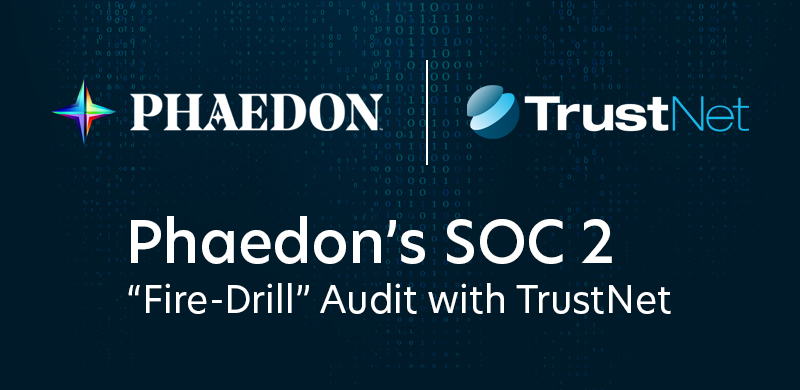Blog All you need to know about SOC 2 audits
All you need to know about SOC 2 audits

A SOC 2 Audit is a set of guidelines and standards that’s been around for many years. It was originally intended as a voluntary standard to promote customer privacy protection but has since evolved into a key criterion in any thorough evaluation of Information Technology risk management practices.
SOC 2 is an internationally-recognized framework certifying organizations use to determine how companies protect customers’ data.
Auditors – service organizations’ external, independent, and objective reviewers – are first and foremost interested in accurate statements. In the audit process that follows this statement, the auditor may be expected to express an opinion about whether the organization’s management is meeting its stated controls or performing below standard, or not meeting its controls. The auditor will be asked to review as much information as possible relating to control effectiveness, which is why the audit risk assessment is required during the planning phase of the audit process.
Audit Risk Assessment
The auditor must understand audit risk to conduct an effective Audit Risk Assessment. Auditing standards define audit risk as the risk that audited information is inaccurate due to material misstatement, omission, or other types of misstatements such as fraud. Audit risk depends on several factors, including materiality level, inherent risk, and identified risks. Materiality is the significance of some statements; inherent risk refers to risks that arise without specific audit activities being undertaken. Identified risks are identified during the audit’s planning phase, which the auditor will review. The following sections will explain these concepts more specifically.
Risk materiality
Risk materiality is inherent in all audits, but it is especially important for SOC 2 Audits, where it is necessary to determine whether control weaknesses are material. An audit risk assessment at this level addresses the following issues:
Risk is material only when an auditor can use information in the control environment to conclude materiality; e.g., a failure to identify an error in a business process or missing controls could mean that an auditor could conclude that there was no error.
Risk materiality for a given audit is determined by the scope of an audit, i.e., the size of an organization and the type of processing being audited. The higher the scope of an audit, the higher the risk of material errors. For example, when auditing a single client of a computer systems service provider and access to that client’s data is not within authorized users, material errors are expected during the audit process.
Inherent risk misstatement
The inherent risk of misstatements increases with materiality level. A misstatement in a financial spreadsheet may be considered immaterial compared to a misstatement in an income statement or summaries of financial data, which are generally more significant.
Once an auditor has determined that some or all of the information to be audited applies to an organization’s financial statements, the materiality level is fixed. This means that there are no changes in the materiality level due to variations in the size of the organization or processing types being audited. Fixed materiality levels have been widely applied by accountants, regulators, and auditors for a long time and are part of the US GAAP and IFRS.
The initial audit risk assessment applies the materiality level to the scope of the audited process or issue. This means that where audit risk assessment is performed, a material misstatement can only be identified if the auditor has developed a conclusion that there is a high probability that the outcome of an incorrect conclusion would be material. The auditor must conduct a detailed review of all information provided. This includes information contained in:
Further, in most cases, it is not sufficient to make deductions from that information to establish its accuracy. Suppose there is no error in the information provided if the auditor found no reason to doubt the accuracy of that information. All audit findings should be acknowledged, and matters should be adjusted to ensure that misstatements do not recur.
Each organization has different control environments, which is reflected in the scope of audit engagements. Each control environment will have a different materiality level because of inherent risks. The auditor should use this risk information to determine how much time and effort to spend on various audit activities, similar to how a physician chooses appropriate medications for an individual patient with a specific situation.
The auditor should also consider personnel factors such as the size of the audit staff or the number of employees directly involved in the audited process. An auditor may find that a person performing an audit for another organization’s internal audit department has a sufficiently high level of expertise to perform the task. However, suppose the audits being performed as part of an outsourcing arrangement contain many procedures that are similar to each other. The auditor may need to hire someone with more experience with audited processes.
The need to maintain a flexible approach to SOC 2 control risk. Materiality levels for certain processes may change with processor and storage technology, changes in market conditions, new regulations, or new trends within an industry. Therefore, by reviewing controls periodically and updating their effectiveness based on experience, the auditor can assess materiality risks more flexibly and adaptively.
An auditor can use identified risks to help determine if controls are effective. The auditor should review the identified risks with management and gather additional information about them, how they are managed, and whether the controls mitigate them effectively. When performing an audit risk assessment, the auditor may find no reason to change the control environment or apply additional controls. The auditor should consider internal fraud and error statistics control when reviewing a controlled environment and identifying risks.
Once the scope of an audit has been determined, it is important to establish appropriate materiality levels for each process being audited and maintain these levels over time. This can be achieved through a formal risk assessment process that considers inherent risk, identified risks, and the organization’s size. In addition, the auditor should consider any issues that may arise during the planning phase of an audit, such as the complexity of a business environment or issues with personnel or resource allocation.
The auditor should review materiality levels to determine whether they are appropriate for a given audit engagement. For example, suppose the audit is part of an outsourcing arrangement and is performed by a third-party auditor. In that case, the materiality levels may remain unchanged from those set at the beginning of the outsourcing arrangement. However, if the internal auditor has been provided more resources to perform an audit, then the auditor should increase materiality levels to reflect increased scrutiny of the overall control environment.
Unleash your potential. Power up your business with trust-building SOC 2 credentials.
Schedule a call with an industry expert.




